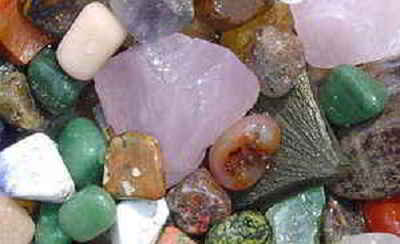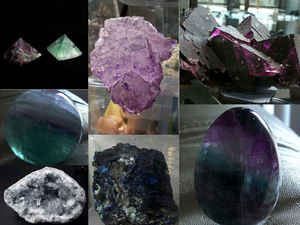Alaska State Mineral
Gold

(Au) Element 79
Adopted in 1968
Gold, (Au,) was adopted as the official mineral of the state of Alaska in 1968. Gold is found and has been mined throughout Alaska; except in the vast swamps of the Yukon Flats, and along the North Slope between the Brooks Range and the Beaufort Sea. Areas near Fairbanks, Juneau, and Nome are responsible for most of Alaska's historical and current gold production. Nearly all of the large and many of the small placer gold mines currently operating in the US are in Alaska.
Alaska State Mineral: Gold

Hard rock minerals are one of Alaska's most important undeveloped natural resources, including coal, gold, silver, copper, and many others. According to the Alaska Miners Association, "Alaska now provides the greatest opportunity for minerals exploration and development in all of North America."
Gold has played a major role in Alaska's history. The discovery of gold brought thousands of people to Alaska and the Yukon. It began in 1849 with a Russian mining engineer on the Kenai Peninsula. It continued to 1914 when gold was discovered in Livengood near Fairbanks.

The Gold Rush Era began in 1880 with a major gold discovery by Chief Kowee (an Auk Indian), Joe Juneau and Richard Harris. Soon hundreds of prospectors poured into the site that later became Alaska's capital city, Juneau, named for the man who used his first summer's earnings to buy the votes of his fellow miners. In 1896, gold was discovered on the Klondike River in Canada's Yukon Territory. Some 10,000 fortune seekers headed for the Klondike gold fields. Many of them hiked from Skagway across the treacherous Chilkoot Trail. In 1899, gold was found on the beaches near Nome. A city of tents sprang up overnight, and by 1900, 232 ships had arrived in Nome carrying nearly 18,000 prospectors. In 1902 Felix Pedro, an Italian immigrant, reported several significant gold strikes in the area near what is now Fairbanks. Some miners immediately came into the area, but the stampede did not take off until 1904. In the end, the Fairbanks mines had more annual production than either Juneau or Dawson in the Yukon.

Since the rush, the Klondike area has continued to be mined with pauses depending on fluctuations in the gold price. In 2011 family-run gold mines still exist, though they work bigger claims and use heavier equipment than the original Klondikers. An estimated total of 1,250,000 pounds (570,000 kg) of gold had been taken from the Klondike area by 2005.
Physical Characteristics of Gold:
Gold is a chemical element with the symbol Au and atomic number 79. It is a dense, soft, malleable and ductile metal with a bright yellow color and luster, the properties of which remain without tarnishing when exposed to air or water. Chemically, gold is a transition metal and a group 11 element. It is one of the least reactive chemical elements, and is solid under standard conditions. The metal therefore occurs often in free elemental (native) form, as nuggets or grains, in rocks, in veins and in alluvial deposits. Less commonly, it occurs in minerals as gold compounds, such as with tellurium as calaverite, sylvanite, or krennerite.
- Name gold
- Symbol Au
- Atomic number 79
- Atomic weight 196.966569
- Color is golden "butter" yellow.
- Luster is metallic.
- Transparency is opaque.
- Crystal System is isometric; 4/m bar 3 2/m
- Crystal Habits include massive nuggets and disseminated grains. Also wires, dendritic and arborescent crystal clusters.
- Cleavage is absent.
- Fracture is jagged.
- Streak is golden yellow.
- Hardness is 2.5 - 3
- Specific Gravity is 19.3+ (extremely heavy even for metallic minerals)
- Associated Minerals include quartz, nagyagite, calaverite, sylvanite, krennerite, pyrite and other sulfides.
- Other Characteristics: ductile, malleable and sectile, meaning it can be pounded into other shapes, stretched into a wire and cut into slices.
- Notable Occurrences include California and South Dakota, USA; Siberia, Russia; South Africa; Canada and other localities around the world.
- Best Field Indicators are color, density, hardness, sectility, malleability and ductility.
Alaska Law
The law designating the gold as the official Alaska state mineral is found in the 2015 Alaska Statutes, specifically Title 44 (State Government), Chapter 09 (State Seal, Flag, and Emblems), Section 110
Title 44. STATE GOVERNMENT.
Chapter 44.09. STATE SEAL, FLAG, AND EMBLEMS.
Sec. 44.09.110. State mineral.
Sec. 44.09.110. State mineral. Gold is the official state mineral.
Minerals, & Gems

Gemstone, Minerals, Rocks







